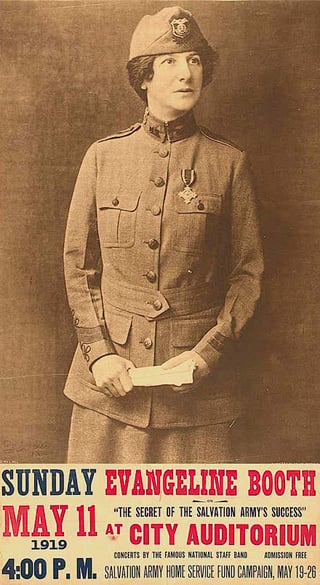
Two Historical Reasons Why The Salvation Army Is a Great Organization
Alan Clayton was a keynote speaker at the Bridge Conference this summer. His presentation focused on the hallmarks of high-achieving fundraising teams in the United Kingdom that had achieved significant growth in revenue.
During his presentation, and while reading his research paper, I saw strong parallels to the history of The Salvation Army and its incredible impact — and was reminded to look to the past for future success. Two major insights stood out:
Insight #1: “Great Fundraising Organizations” base their brand on the problem they are trying to solve.
According to Clayton, “Great Fundraising Organizations [sic] base their brand on ‘the problem we are trying to solve’. They brand the mission, not the organization. They focus their communications less on ‘trust’ (i.e. organization credibility) than on ‘belief’ (i.e. the dream of solving a problem).”
Clayton highlighted an alignment of communication and fundraising efforts around ending a problem in our communities — often one that seems impossible to achieve. Each of the “Great Fundraising Organizations” he studied clearly defined the problem they were going to solve and the NEED for financial support to accomplish their mission.
 This problem-solving approach to a mission and creating a “movement” of support reminds me of William Booth’s pioneering work to end child sex slavery in England, and his bold blueprint for doing so outlined in his book, In Darkest England, and the Way Out. The Salvation Army was established to solve some of the most intractable problems in Victorian England and around the world. William and Catherine Booth, along with the early officers of The Salvation Army, brought together a coalition across denominational lines to solve social ills that were plaguing people in their time. In the same way, Evangeline Booth saw the challenges to the spiritual and emotional well-being of soldiers in World War I, and deployed mostly young women to provide the home comfort and support desperately needed by men serving on the front lines.
This problem-solving approach to a mission and creating a “movement” of support reminds me of William Booth’s pioneering work to end child sex slavery in England, and his bold blueprint for doing so outlined in his book, In Darkest England, and the Way Out. The Salvation Army was established to solve some of the most intractable problems in Victorian England and around the world. William and Catherine Booth, along with the early officers of The Salvation Army, brought together a coalition across denominational lines to solve social ills that were plaguing people in their time. In the same way, Evangeline Booth saw the challenges to the spiritual and emotional well-being of soldiers in World War I, and deployed mostly young women to provide the home comfort and support desperately needed by men serving on the front lines.
The Salvation Army has a strong legacy of bringing light to some of our world’s darkest places, and for inviting people to join their mission as a donor and/or volunteer.
Insight #2: A Fundraising culture widens the circle and keeps the focus on advancing an organization’s mission.
Another hallmark of “Great Fundraising Organizations” is a culture of fundraising that is shared across departments. Clayton shared, “In organizations that fail to achieve great fundraising, the fundraising function is deemed to be funding the organization’s budget, and propositions are dictated by other departments based on fiscal need. In the Great Fundraising Organizations, the organization unites around a mission-based proposition, meaning that fundraising and other departments are trying to solve a problem together. They understand that fundraising is about a dream of the organization, not the organization itself.”
This organizational alignment around fundraising ensures that growth is responsive to the needs and creative solutions of the organization’s work, with a clear understanding of how growth in revenue will help advance the organization’s mission.
A shared fundraising culture has been a strong part of The Salvation Army’s identity and experience since the beginning. The organization acknowledges that, in order to accomplish their transformative work, it needs the support of a larger “movement” of people to fulfill its calling. This call to partnership is reflected in the opening of their mission statement: “The Salvation Army, an international movement, is an evangelical part of the universal Christian church …”
The Salvation Army’s historical alignment of officers and donors around a central mission reflects TrueSense’s approach to donor engagement.
We have found that donors are problem-solvers with a deep desire to make a difference. We often say that “Donors are Heroes.” It’s our way of acknowledging the amazing generosity of people who 1) see a need and are willing to invest their own resources in solutions, and 2) sustain a greater hope that they can work with others to end major challenges in our society. Whether it’s ending hunger, battling homelessness, or overcoming the barriers that prevent low-income children from thriving, donors are looking for an organization that shares their same passion for making a difference.
At TrueSense, we believe The Salvation Army is one of those organizations — a “Great Fundraising Organization.”
Read more from Alan Clayton and his research on “Great Fundraising Organizations” here.
